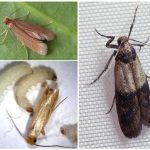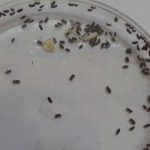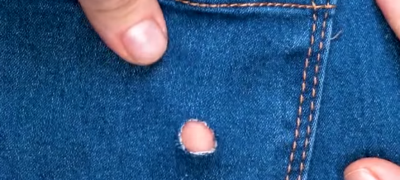How to get rid of bugs in cereals effectively
Radical methods of fighting insects are the use of poison, which is dangerous for human life. That is why it is absolutely impossible to use cereals containing poison!

The most effective drugs are:
- "Antizhuk". It is effective against all types of insects and can be applied to any surface - it is delicate in terms of texture. The drug is toxic, therefore, after use, the room must be well ventilated. The price is about 350 rubles.
- Karbofos. Poison can be bought in different forms - tablets, aerosol, powder. It not only effectively fights all kinds of insects, but can also be used to prevent their appearance - for this, it is enough to put a pill in the far corners of the cereal cabinet. The price is about 150 rubles.
- Chalk "Mashenka". The tool is used more to prevent the appearance of pests - you just need to smear the corners in kitchen cabinets, joints, doors. The procedure must be repeated every 2-3 weeks. The price is about 25 rubles.
- Lovin Fire Protection. This drug is the best solution to get rid of a colony of food bugs in the kitchen, because it is effective against adults, larvae and egg clutches, is not toxic, does not spoil the surface. The drug is dangerous, has the same effect on all living things, so you need to use it out of the reach of children and animals. Price - about 2000 rubles.

Can I eat contaminated products?
It is categorically impossible to eat cereals affected by insects! Even if they have undergone a strong heat treatment. The fact is that not only larvae remain in the cereal, but also the waste products of insects.
The excrement can contain causative agents of many dangerous diseases: diphtheria, hepatitis, and helminthic varieties.
Prevention of reappearance
Like most other problems, bugs are easier to prevent than to deal with later.

This practice can scare off parasites:
- Proper storage of food. Cereals should not be left in their original packaging, because they deteriorate much faster in polyethylene. It is better to pour everything into an airtight container, where it will not be possible for bugs to get into. If the products are purchased for future use, they need to be poured about once a month and checked for insects, larvae or their excrement.
- Optimal temperature conditions. Legumes are best stored at low temperatures, so they should be refrigerated right away. Such conditions will not spoil the taste, but will allow the product to be stored longer.
- Deterrent agents. Between the jars of cereals, put citrus peels, chestnuts or a handful of salt in bags. These components have a deterrent effect on parasites and prevent their appearance for a long time. You need to change citrus peels once every 2-3 months. Grains of anise, cardamom, coniferous twigs, cloves of garlic have similarly pungent odors. It's another matter whether this smell will be pleasant to households.
- Acetic processing.Once a week, it is necessary to wipe all shelves and hard-to-reach joints with a solution - this will remove the eggs and larvae of beetles, prevent their spread and quickly remove only nascent colonies.

It is important! After processing with vinegar, the shelves must be wiped dry with napkins, otherwise the pungent smell will remain in the room for several days and it will be very difficult to remove it.
How to remove insects from kitchen furniture
After getting rid of all contaminated foods in the kitchen, you need to start processing cabinets and work surfaces. If the lesion is severe, you need to use chemicals, under the influence of which the pests die immediately. It is desirable to carry out the processing once every 2-3 days, constantly observing whether the larvae appear again.

It is not recommended to use the lockers for their intended purpose during cleaning. After work, they will need to be thoroughly washed with soapy water. Insects can get into the house along with cereals, which a careless manufacturer has not processed from pests. Larvae or small beetles in cereals or barely noticeable black marks from them are a sure sign that the product is hopelessly spoiled.
Throwing away the affected package is half the battle, because insects could already penetrate all groceries. Beetles need to be exterminated and preventive measures taken so that they do not reappear.
Where do bugs in rump come from?
It is improper storage, increased dampness and humidity that provoke the appearance of larvae in cereals. Most often this happens in warehouses where groceries are still open. Finding themselves in a new environment, insects quickly assimilate, lay larvae and eggs. Then the affected product is packaged and sent to the distribution network.

According to the technological map, conscientious manufacturers must process their products with a special composition to destroy pests. This composition is effective against adults and larvae, but safe for humans. Alas, many manufacturers neglect this measure, so insects enter the house.
What bugs start in cereals
In order to objectively assess the danger and choose an appropriate control strategy, it is important to identify the insect.
Most often found in cereals:
- Surinamese muco-eater. These light-colored beetles with long horns can grow in flour, grain and nut crops, and dried fruits. In domestic latitudes, the pest is widespread everywhere, with an interesting feature: in the southern regions, the mucoid is localized in any premises, and in the northern regions - only in heated ones.
- Food moth. Groceries are harmed by caterpillars of moth butterflies, laying up to 150 eggs in 2 weeks of life. They have no mouth, so there is no feeling of being eaten in cereals and pasta. The larvae infect food with their waste and spoiled cereals must be disposed of.
- Bread grinder. These small cinnamon bugs eat all kinds of foods. Bread affected by a grinder is considered harmful to human health.
- Flour beetle. A tiny cereal beetle of a very small size, affecting mainly flour and containers where semolina is stored. With a significant defeat by a beetle, it is taken in a lump and becomes unfit for food.
- Red-haired muco-eater. A small beetle of a yellowish-rusty hue, with a body covered with villi. Lives in a humid environment, mainly in flour mills.
- Rice weevil. If small and nimble cinnamon bugs are bred in the kitchen, this is it. From a distance, this pest can be mistaken for an ant - its size is so miniature. Despite the name, it affects any cereals.

How to deal with beetles
The easiest way to get rid of pests is to throw out all the cereals. At the same time, no one can guarantee that the larvae were not deposited somewhere in a cabinet or just on a shelf.

You need to deal with the problem in a comprehensive manner, having treated all surfaces from possible parasites, looking at the rest of the cereals and all hard-to-reach places.
Sifting cereals
Any product can be a hotbed of infection - cereals, animal feed, a cardboard box inside which pests have settled. Having found the ill-fated package, you should not throw it away - it is better to sift it, get rid of the larvae and give it to street animals or birds for food.

It will not be superfluous to look through the rest of the cereals - those that have not damaged the packaging can be poured into sealed boxes and put aside. Suspicious products must be sieved and left for further processing.
Heat treatment
Beetle larvae are afraid of both high and low temperatures, so they can be thermally exposed. The groats need to be poured onto a baking sheet and baked in the oven at 50 ° C for 60 minutes. Stir the contents periodically.

An alternative treatment option is exposure to cold. The "suspicious" cereal should be placed in the freezer for at least 3 days. Better - longer. During this time, both parasites and larvae will die. It is important to take into account that some products, after heat treatment, lose their original properties.

Oatmeal and semolina, having been in the freezer, can take a lump. Legumes become harder after the oven and take longer to cook for consumption.
Borax and boric acid
Both components are great not only for controlling insects, but also for preventing their appearance.

The most effective are:
- Borax balls. Millet and powdered sugar will become additional components of the poison, which will attract beetles with their smell and sweetness. The groats must first be ground in a coffee grinder and mixed with the rest of the ingredients and rolled into balls. The poison must be laid out in the cabinet where the cereals are stored.
- Borax powder. Yeast, sugar and sugar must be ground in a coffee grinder until smooth. It is enough to sprinkle the resulting powder on small sheets of paper and put it in a place where parasites accumulate (cabinet corners, fastening grooves).
- Boric acid powder. By adding sugar and flour to the main element, you can get a poison that is deadly for insects. Boron powder, as in the case of borax, must be decomposed in places where bugs accumulate.

Any of the above funds has a limited duration of effectiveness - 1 month. After this time, the old poison must be disposed of and a new one prepared.
Salt and vinegar
Vinegar and soda-salt solution will help to cope with adults and larvae, eggs. In the first case, the 9% concentrate must be mixed 1: 1 with water. In the second - in a liter of warm water, you need to stir 2 tbsp. tablespoons of table salt and 1 tbsp. l. baking soda. The liquid must be left to infuse for 10-15 minutes so that all solid particles dissolve.

All kitchen surfaces and joints, doors are processed with the resulting solution. You can pour liquid into a spray bottle and spray all hard-to-reach places - this will make the treatment more effective. You need to do these manipulations once a week when fighting parasites and once a month for prophylaxis.There is only one limitation - lacquered furniture. Liquid surfaces can corrode.
Water use
The easiest way to prevent insects is to clean frequently.

If it is prophylactic, you can do without additional funds or add a little soap solution. It is better to wash all joints, shelves and surfaces once a week - this way the likelihood of the appearance of insects is minimized.
Chemicals
The replacement bag must be destroyed to prevent contamination of other groceries, they must be stored in sealed boxes.

To prevent bugs from appearing on the shelf, citrus peels, coniferous twigs, etc. can be laid out in the kitchen cabinet.
Video: how to get rid of bugs in the croup















